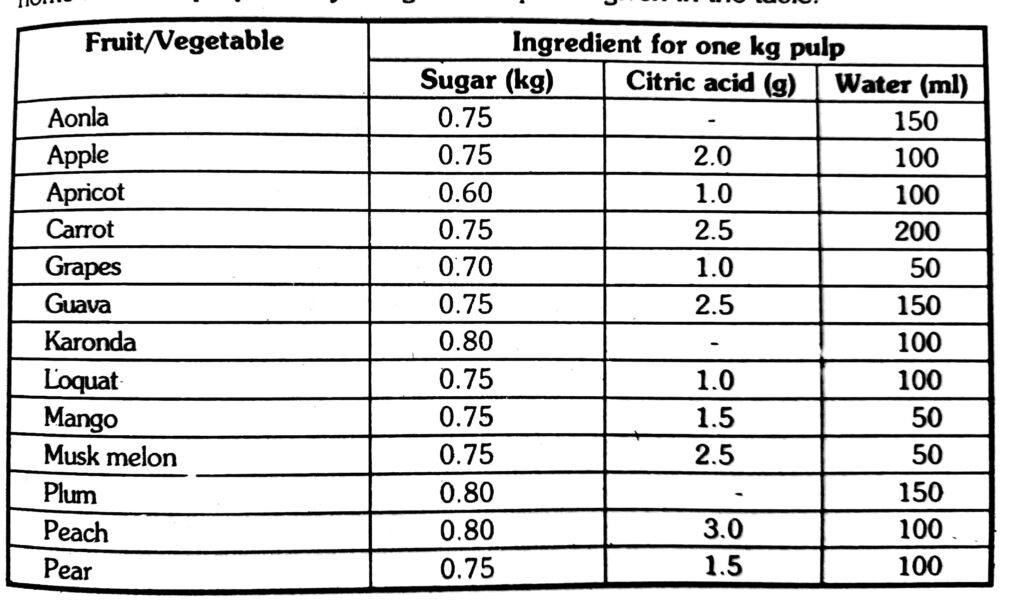Jam is a product made by boiling fruit pulp with a sufficient quantity of sugar to a reasonably thick consistency, firm enough to hold the fruit tissues in position. Apply, sapota, papaya, plums, mango, grapes, jack, pineapple, banana, guava, and pears are used for the preparation of jam. It can be prepared from one kind of fruit or from two or more kinds. In its preparation, about 45% of fruit pulp should be used for every 55% of sugar. The FPO specification of jam is 68.5% TSS, 45% of fruit pulp, and 0.5-0.6% of acid (citric acid) per 100 gm of the prepared product.
a) Selection and preparation of fruit
Select good quality ripe fruits. Wash the fruits well in cold water. Peel the fruits and remove the stones and corers present. Cut the peeled fruit into small pieces with a stainless steel knife. If the fruit is hard, it should be cut into very small pieces. Pulp the fruits by using a pulper.
b) Addition of sugar and acid
c) Cooking
Cook the mixture slowly with occasional stirring. The fruit pulp should be crushed with a laddle during cooking. Continue cooking till the temperature of the mass reaches 105.5oC.
d) Sheet (or) Flake Test
A small portion of jam is taken out during boiling in a spoon or wooden laddle and cooled slightly. It is then allowed to drop. If the product falls off in the form of a sheet (or) flakes instead of flowing in a continuous stream (or) syrup, it means that the endpoint has been reached and the product is ready. Otherwise boiling is continued till the sheet test is positive.
e) Packaging
Fill the hot jam into clean dry sterilized jars. Allow the jam to cool and fix the sterilized lid to the jar. Store in a cool place.

Apple Jam
Ingredients
Apple pulp – 1 Kg
Sugar – 750 g
Citric acid – 2.0g or lemon – 2
Water – 100ml
Process
Ripe firm fruits → Washing → Peeling →Pulping (Remove seed and core) → Addition of sugar and acid → Boiling (with continuous stirring) → Judging of the endpoint by further cooking up to 105oC (or) 68% TSS (or) by sheet test → Filling hot into sterilized bottles → cooling → Sterilized bottles → cooling → Waxing → Capping → Storage (at ambient temperature).
